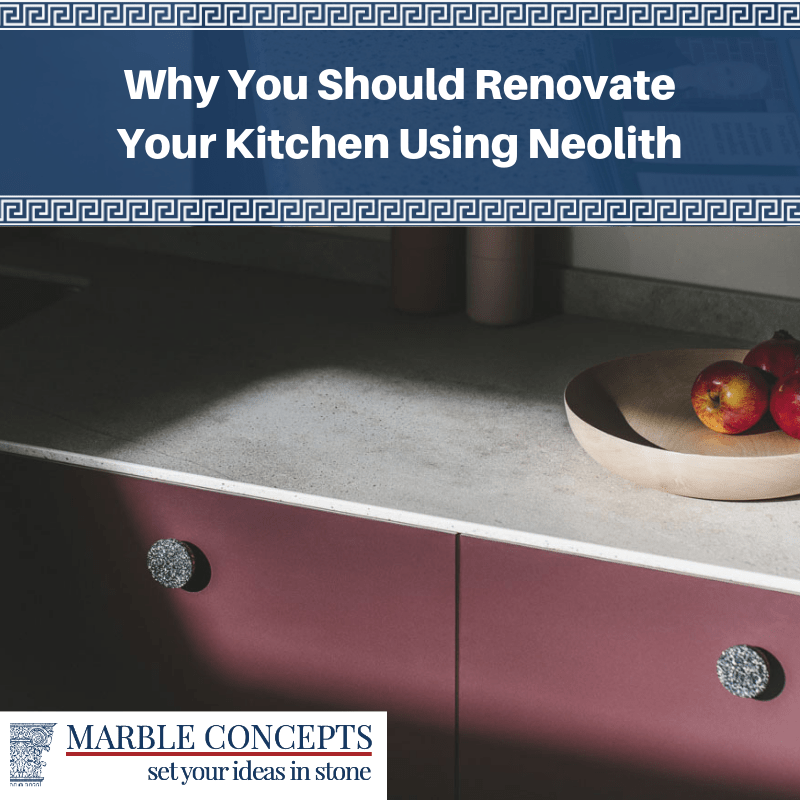Pretty soon, you may hear professionals in the home interior industry praising the concept of a “Neolithic kitchen”. And no, this isn’t a new age fad like the “paleo diet”, but rather due to the advent of a remarkable new countertop material called Neolith. The term “Neolithic”, usually used to refer to the ancient period when man began crafting large stone monuments, actually just means “modern stone”, and Neolith has earned this name, being for all intents and purposes, the first synthetic stone material of true practical worth.
Neolith was created as an answer to many problems well-known in the kitchen interior field. Countertops have a lot of challenges to overcome. Not only must they look beautiful and feel pleasant, but they also have to stand up to a lot of abuse. In the past, this has resulted in a compromise in one direction or another – either it was durable but not classy, or it was prestigious but fragile. The only way to have one’s cake and eat it too, was with very costly materials like marble, travertine, or granite. Even then, these materials are far from indestructible.
What is Neolith?
Technically, Neolith is a form of porcelain. We think of porcelain as something somewhat fragile, but that depends on the type, and how it’s made. Neolith, while a porcelain, can basically be considered a synthetic form of stone. The same processes used to make porcelain, are what (at a slower and less precise way) nature uses to create most forms of stone. What are those? Shaping, pressure and heat. Neolith is created from specially formulated clay, and heated to temperatures in excess of 2552 degrees Fahrenheit. These temperatures rival that of the surface of the sun, or the immense heat of the earth’s core.
The result is something essentially as hard as some of the hardest stones, but with such precise molecular design, natural flaws aren’t present.
Advantages of Neolith
Non-Permeable
While stone such as marble or granite are very tough, and heat-resistant, they are still susceptible to damage. Granite and marble can be scratched or chipped, though it takes quite a bit of force for it to happen. More of a danger is how permeable they can be – they can be stained. They can also be etched by acidic compounds or abrasive substances.
Neolith can have the look and feel of stones like these, but the molecular alignment of the material is stain-proof, incredibly difficult to damage, and can stand up to intense heat and acidic chemicals. It’s also remarkably easy to clean and keep sterile.
Flexibility
Neolith, being artificially created, has immense potential aesthetically. Presently, the implementations are somewhat limited, due to the novelty of the material. Presently, it’s already found a secondary use in a thinner form, for cladding and backsplashes, making this potentially a material suitable for large wall projects, perhaps one day flooring as well. In the future, as chemistry and material sciences progress, this material could also begin to take on the texture and appearance of extant things like stone, tile, or completely invented new material esthetics.
Affordability
Granite, marble and alternative synthetics are very, very expensive, comparatively-speaking. However, Neolith is competitively priced, making it financially viable for most budgets, within reason. This means that you can have the aesthetics and solidity of something like stone, with the modern, space-age material durability and versatility of synthetics. Basically, this is having your cake and eating it too, by price, quality and appeal.
Resale Value
Finally, let’s talk a little bit about resale value. Your home is a major investment, and you want this investment to appreciate in value, even if it’s your forever house. Timely renovations with the best materials, and contemporary styles, is usually a wise decision.
Of course, a solid strategy to avoid ongoing renovations to keep up with the times, is to choose durable yet timeless materials. Neolith is a prime candidate for this, as even the least-aesthetically-treated forms of it resemble high-end, timeless ceramics that age gracefully, and will never be out of vogue in modern lifetimes.
Neolith has a bright future, and it will be interesting to see what they can do with it in the future, as it matures and new innovations come along.






